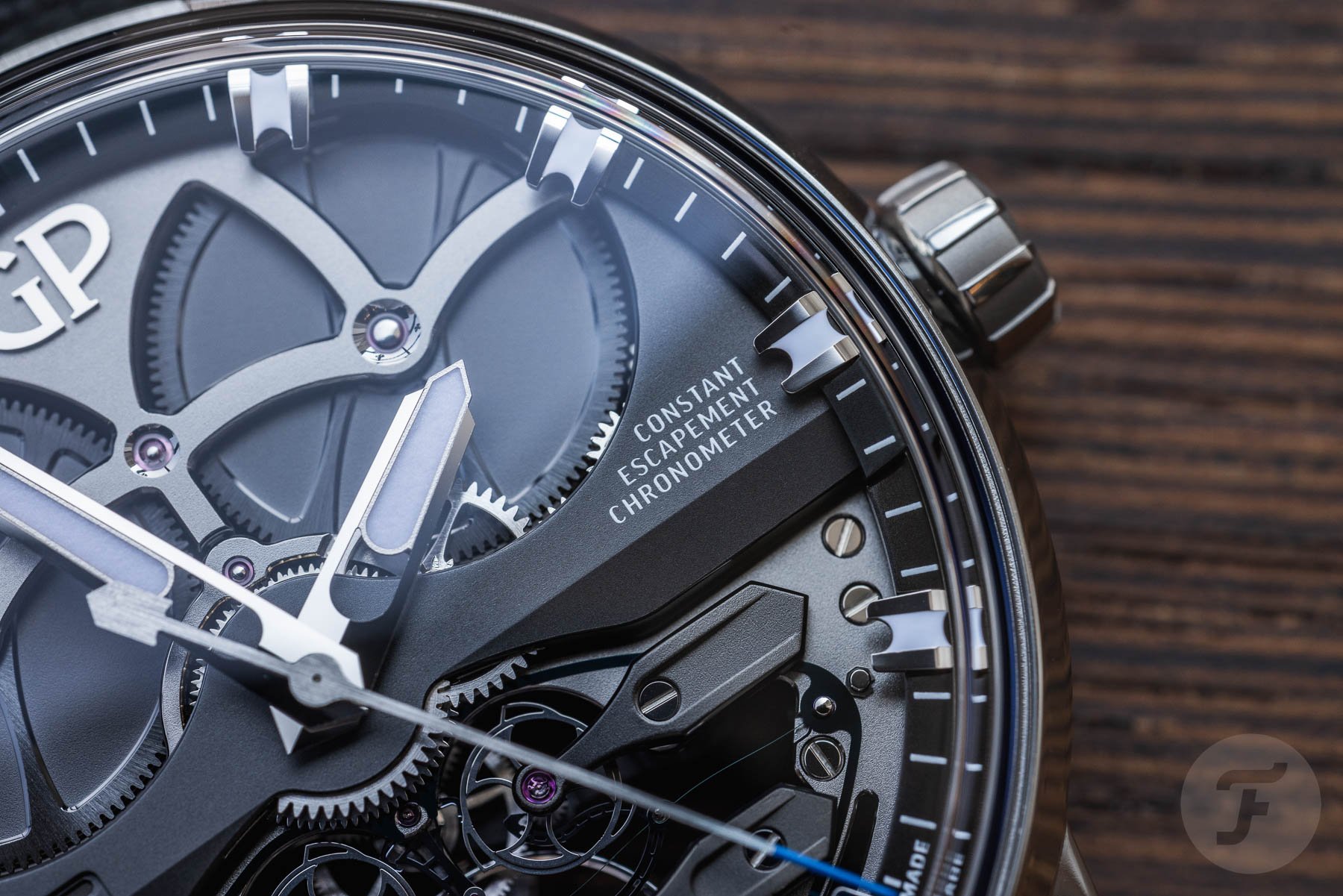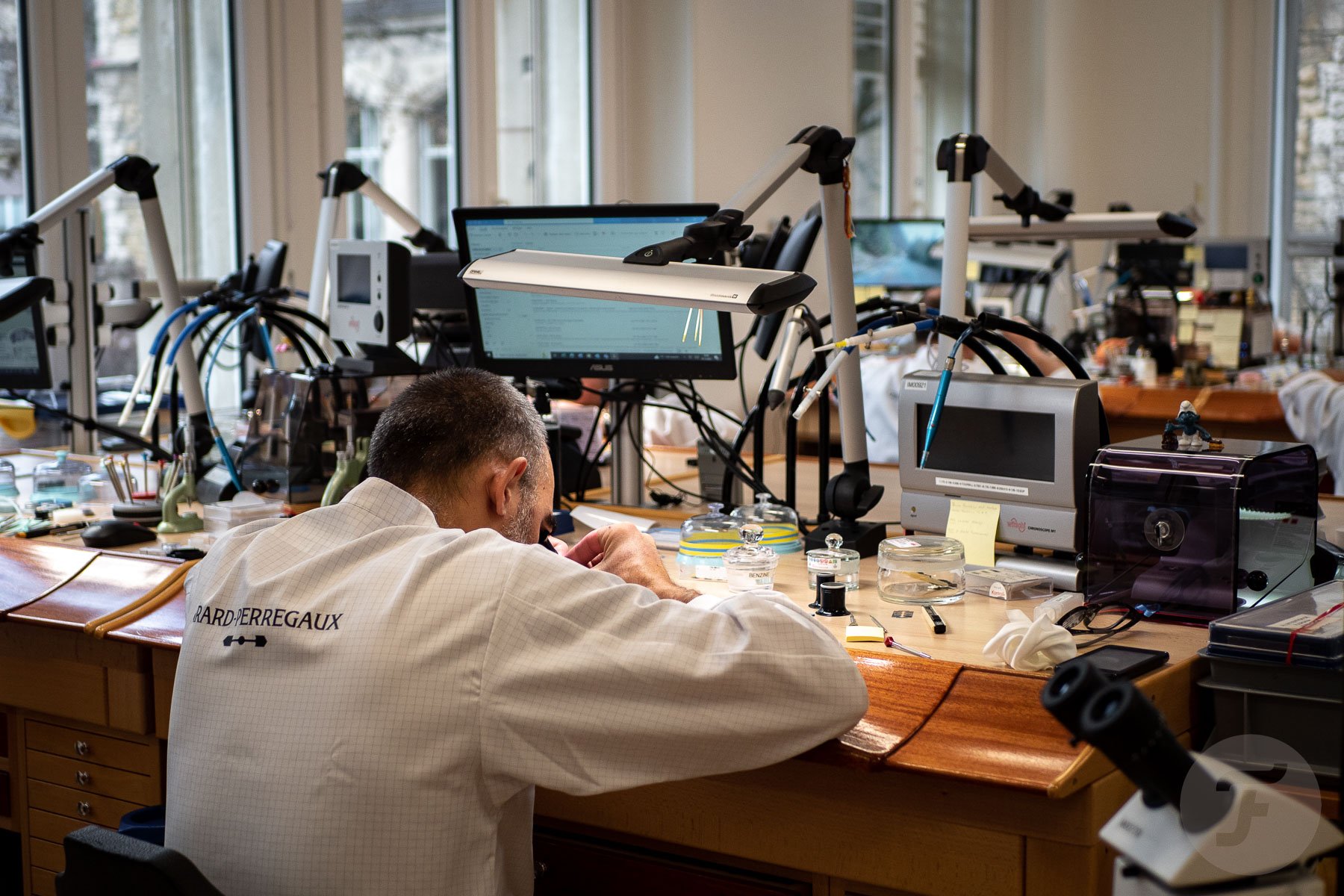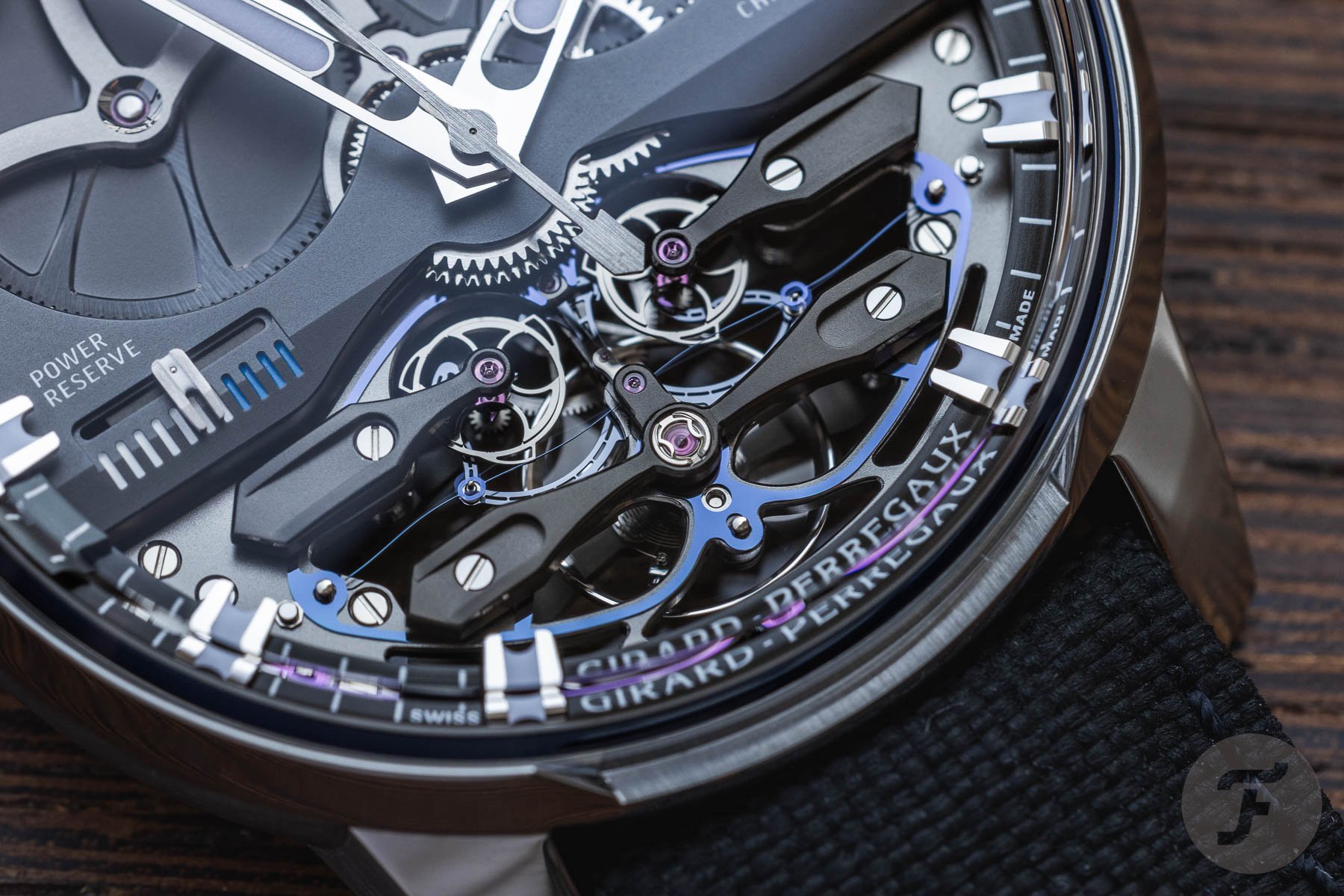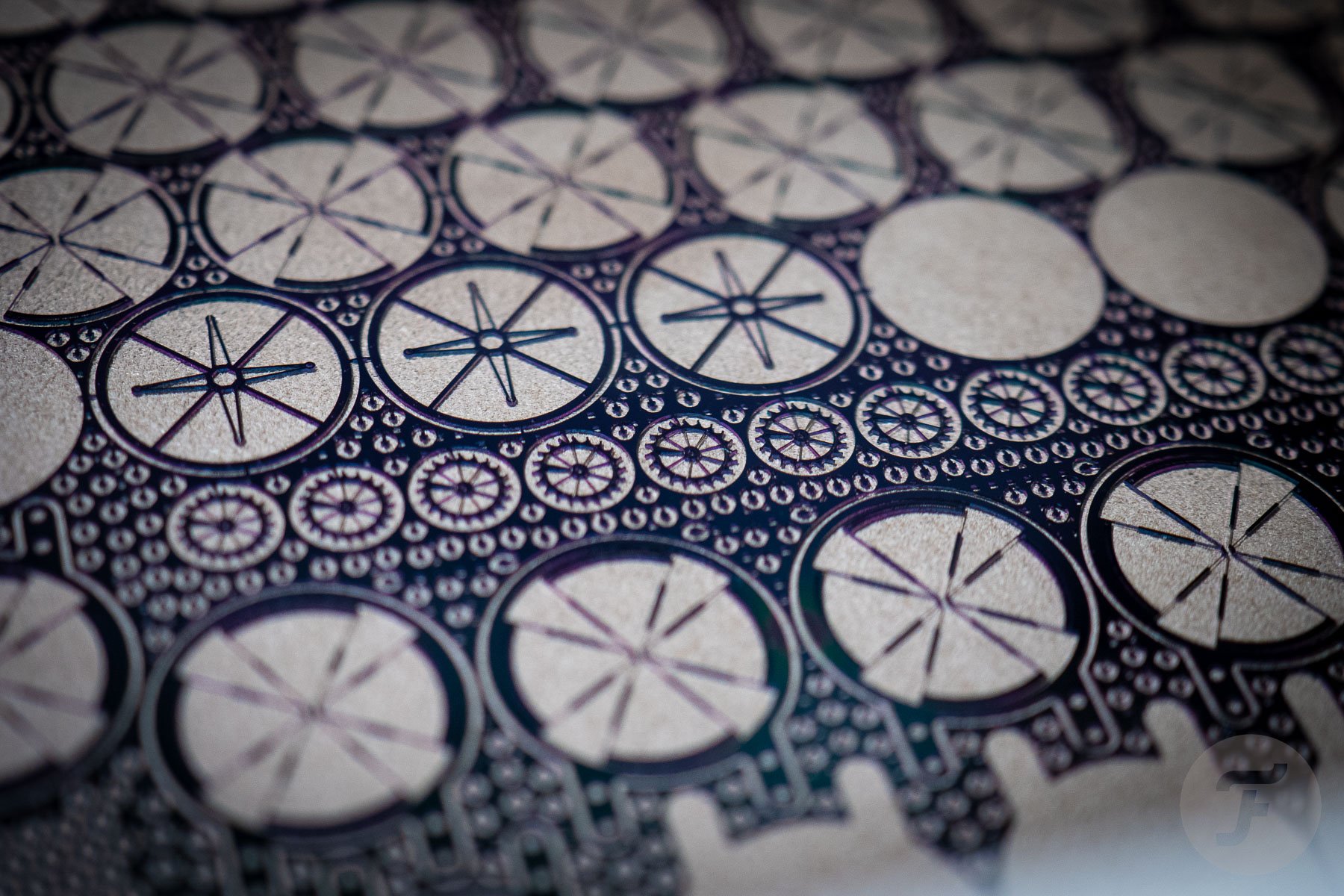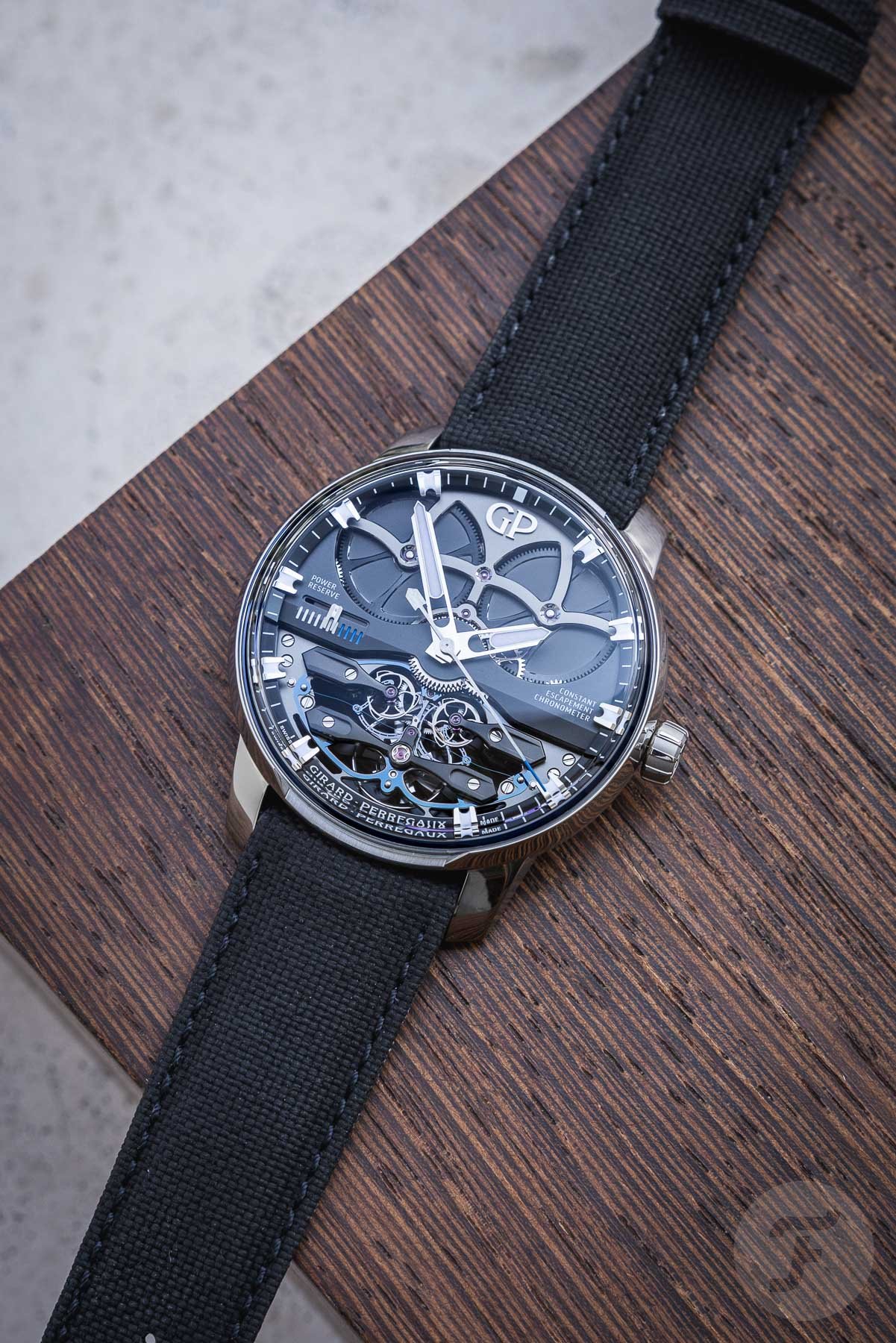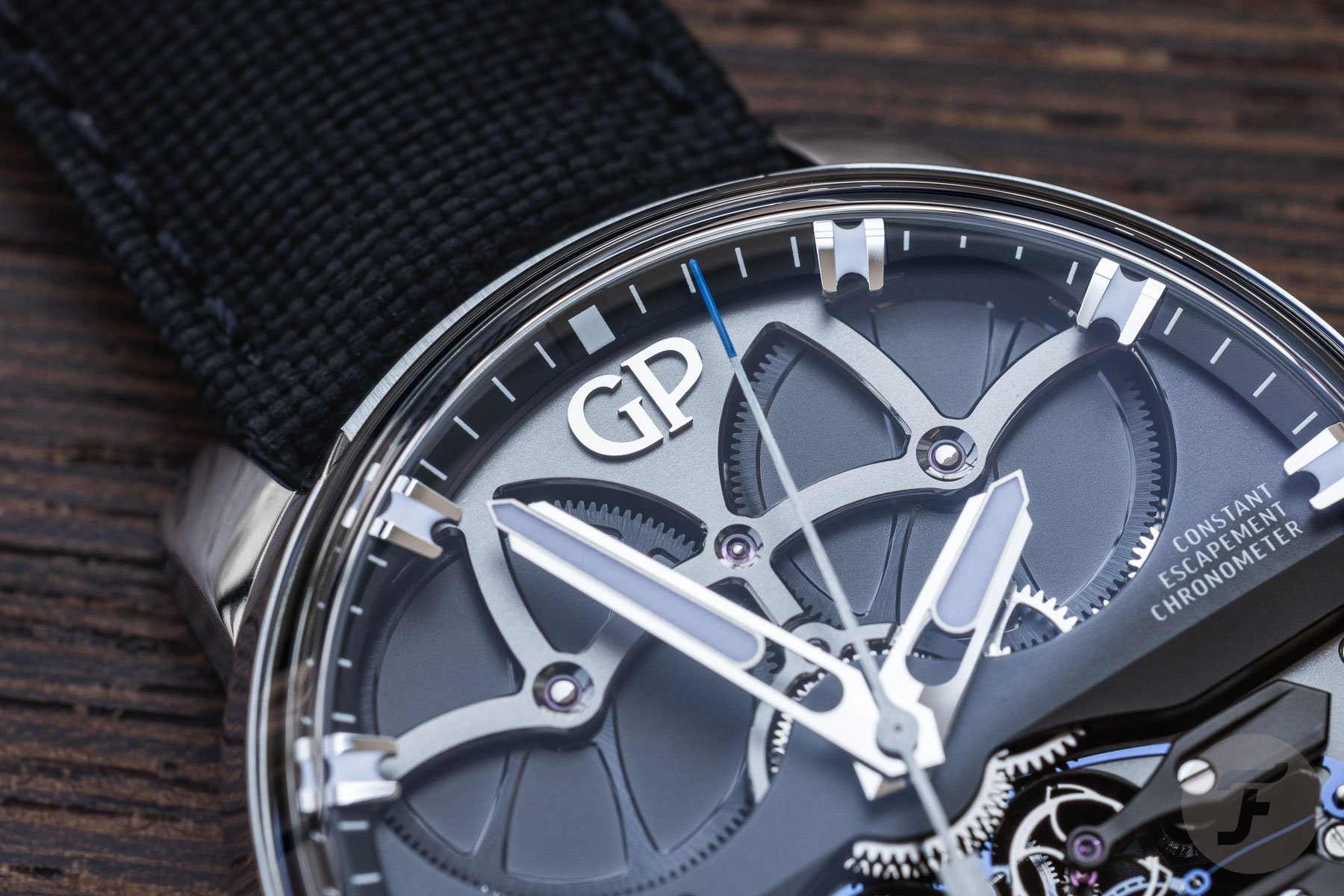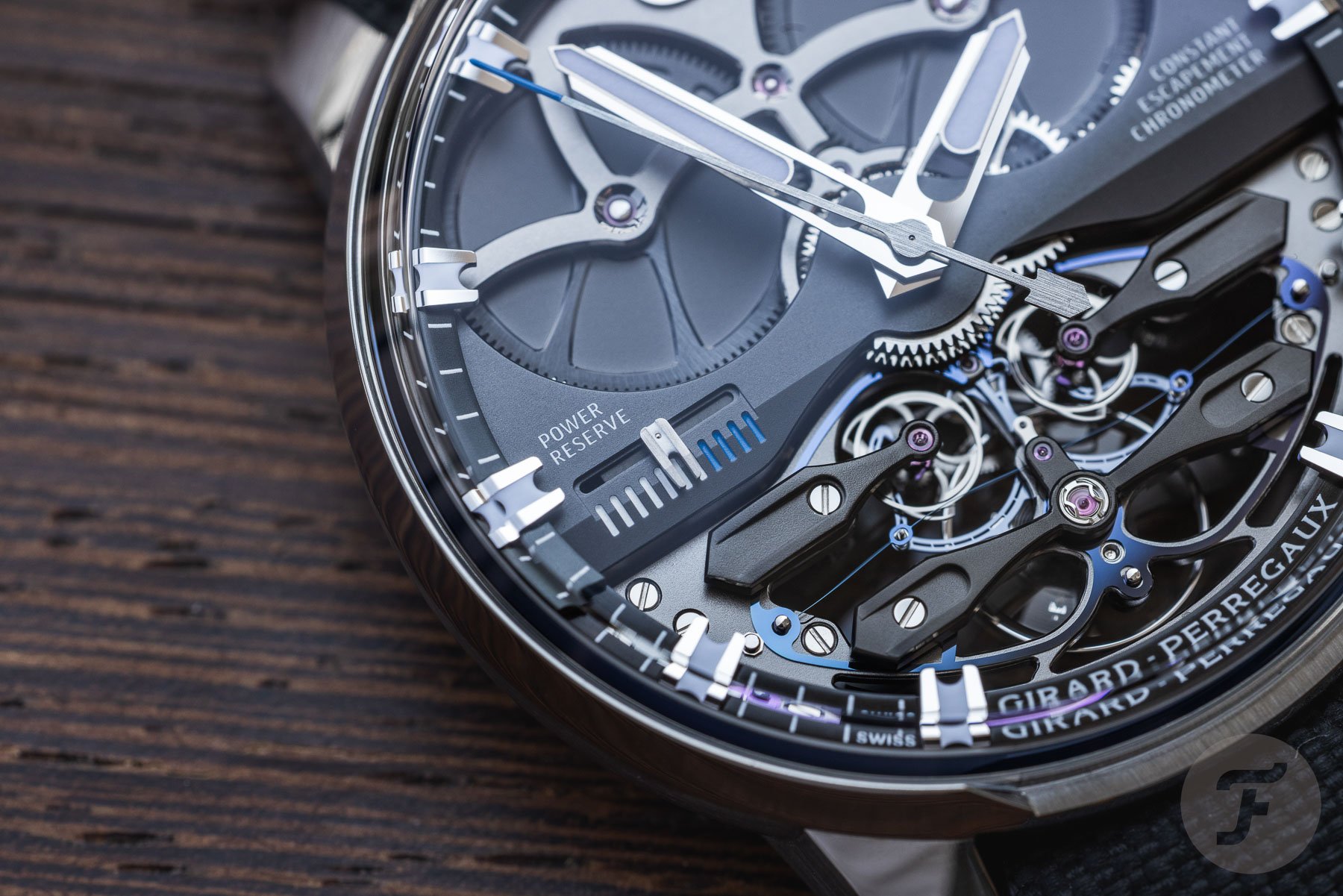Introducing: The New Girard-Perregaux Neo Constant Escapement
When it comes to horological innovation, we often wonder if we have seen everything there is to see. Have we reached the pinnacle? Can watchmakers reinvent the wheel once again? It’s the mission of all serious horologists to do just that. But with watchmaking having been around for so long, most angles have been covered. Innovation is a noble thing to strive for but one that is notoriously hard to achieve. Few independent watchmakers and even fewer brands earnestly seek to reach it. However, it is not an impossible target to aim for. Once in a blue moon, a brand will achieve this elusive goal. Girard-Perregaux has done so this time with the new Neo Constant Escapement.
As with any innovation in the world of horology, it comes down a long and winding road — or, in this case, on a train riding a long and winding track. One thing is certain, and that’s Girard-Perregaux’s desire for innovation. We saw material innovation in the Laureato Absolute Chronograph 8Tech released during Geneva Watch Days. But now it’s time for it to occur at a mechanical level. It has been the quest of one watchmaker (Matthieu) working tirelessly at the manufacture’s R&D department to perfect the Constant Escapement. After creating many prototypes and filing several patents, the concept has gone from theoretically feasible to one that can even work for production timepieces. Before we take a look at the Girard-Perregaux Neo Constant Escapement, let’s look back at the journey that brought it to life.
A constant force of innovation
I won’t take you through the history of constant force as an approach to accurate mechanical timekeeping. You can find that in this article. But in broad strokes, all “constant-force” mechanisms aim to solve an issue that all mechanical timepieces share. With the mainspring fully wound, more force travels through the escapement. This tends to cause the balance to run at a slightly increased rate. On the other hand, when the mainspring output is low, less force travels through the mechanism, causing the balance to run at a reduced amplitude and rate. A constant-force mechanism seeks to even out the power distribution, stabilizing the rate. This helps maintain accuracy regardless of the mainspring’s force output. It’s especially useful in watches with a long power reserve striving to perform at chronometer spec.
Unlike previous approaches to achieving constant force, the Neo Constant Escapement employs a uniquely crafted silicium blade integrated directly into the escapement. In 2008, Girard-Perregaux created a prototype using the silicium-based technology. This was possible thanks to the developments made by Girard-Perregaux in collaboration with Sigatec in the ’90s, during what the brand describes as the advent of Deep Reactive Ion Etching (DRIE). Upon its release in 2013, the Constant Escapement L.M. won the GPHG’s Aiguille d’Or. This 48mm behemoth served as the technically impressive foundation for the watch introduced now.
Buy the ticket, take the ride
The Girard-Perregaux Neo Constant Escapement refines what the original achieved, elevating it to the next level. But where does the idea behind using a silicium blade come from? Well, you might find the rather mundane spark behind the fire of this idea surprising.
As the brand explains, “The idea for the silicium blade can be traced to a train journey when an inventive watchmaker held a train ticket between his forefinger and thumb and made several observations. When a train ticket is flexed, it assumes a ‘C’ shaped form and becomes unstable, a scenario termed ‘buckling.’ Lateral pressure will cause the card to accumulate a uniform amount of energy up to the point of instability before snapping back, effectively creating an inverted-C-shaped profile. It’s this dynamic behavior of switching from a state of compression to that of bending that lies at the heart of the Constant Escapement.”
This all sounds rather technical. But if you want to see how this original concept works inside the Constant Escapement L.M., you can check out the above video from Girard-Perregaux. It breaks everything down into a handy visual guide. It’s worth understanding how this works before moving on to the next section. You have been warned! Now brace yourselves; we’re about to get technical.
Getting technical
Once again, I’ll just let the brand’s explanation of the technical aspects of the Constant Escapement speak for itself:
“Unlike most conventional watches, the movement within the Neo Constant Escapement features a ‘fifth wheel’ connected to the gear train. The fifth wheel transfers energy to two escape wheels, each fitted with three teeth, matching the frequency of the movement (3Hz). Energy is received from the escape wheels alternatively (i.e., not simultaneously). Thereafter, the energy is sent via a rocking lever to the buckling silicium blade. The Constant Escapement exploits the “elastic and bi-stable” properties of the buckling silicium blade. Six times thinner than a human hair, the blade engages with a lever that serves an impulse to the balance wheel.”
That’s quite the dance! If you could slow down the movement, you’d see that a single oscillation contains 20 sequences. This precisely tuned movement provides constant force. In turn, this ensures that the amplitude stays consistent. Even the symmetry of the blade and the escape wheels set on either side of the balance wheel ensure an even application of force to the center of the regulating organ. This creates a freely flowing and perfectly balanced turning motion. How is the regulating organ produced? Well, that’s also a deeply nerdy and highly technical process. Sounds great, right? Let’s take a closer look.
Manufacturing the silicium blade
Inside the lab, it all starts with a large silicium crystal, which gets cut into thin “wafers.” A process called “photolithography” is used to cut the shapes needed.
- The silicium wafer is bonded to a silicium support with an oxidation layer. The depth limit of the material can be ascertained during the subsequent etching phase.
- While rotating the wafer at high speed, a liquid polymer called “photoresist” is applied to the surface. The centrifugal action caused by rotating the wafer displaces surplus liquid, leaving a smooth, thin, uniform resin layer.
- A mask, formed in the shape of the escapement spring, similar to a stencil, is positioned on top of the wafer. Everything is then subjected to an intense treatment of UV light. A chemical reaction takes place, and a special solution is used to remove any residues of the photoresist.
- After it is cleaned, the surface of the wafer reveals a series of escapement springs. These are cut from the wafer using an etching process called DRIE (Deep Reactive Ion Etching). The technique, effectively 3D printing in reverse, removes the silicium and resin, micro-layer by micro-layer until it reaches the aforementioned oxidation layer.
- The silicium support and its oxidation layer are removed using a “stripping” process. After that, the wafer is subjected to thermal treatment, a step that creates yet another oxidation layer on the silicium components. This improves their mechanical resistance and endows them with a specific color. In this instance, the hue appears to transition from blue to purple. Each escapement spring, with its buckling blade positioned center stage, is carefully detached by hand from the wafer.
- The resultant escapement spring is 120 microns thick, while the blade is 14 microns wide. By comparison, a single human hair is typically 50–90 microns in thickness.
The Girard-Perregaux Neo Constant Escapement
Now that you know what has gone into creating the new Girard-Perregaux Neo Constant Escapement, let’s talk about the watch itself. I had the chance to see it in late August during Geneva Watch Days. I had previously seen the Constant Escapement L.M. during a visit to the GP manufacture in November last year, so I was somewhat familiar with the predecessor. The first thing that struck me was the reduction in size from the L.M.’s 48mm diameter down to 45 × 14.8mm (with a 30m water resistance rating). It’s a large but wearable watch thanks to the shortened, downward-curving lugs. The next thing that I noticed was how light it was. This is thanks to the combination of sapphire and Grade 5 titanium that makes up its minimalist case. Besides the beautifully machined crown at 3 o’clock, it’s an understated affair, allowing the movement and mechanical wonder inside to shine.
Finally, the watch’s layout was the third element that jumped out to me. Unlike the original L.M., there’s no off-center dial for the timekeeping elements. The Neo Constant Escapement follows a more traditional approach with all three hands emerging from the central pinion. Additionally, the skeletonized hour and minute hands have a generous application of lume. Flanking a polished Girard-Perregaux logo at 12 o’clock are the hand-wound, COSC-certified GP09200-1153 caliber’s twin barrels. These give the timepiece seven days of constant-force-regulated, chronometer-certified timekeeping. A power reserve indicator at 9 o’clock will keep you posted on how long the movement will continue to tick. Finally, at 6 o’clock, the pièce de résistance is the Neo Constant Escapement’s regulating organ and escape wheels. Holding these in place is a pair of independent bridges, each fixed with a polished screw. An individual Neo bridge spans the base of the dial, supporting the balance wheel.
Details that matter
On the flip side, through the sapphire exhibition window, you can also admire the movement’s stunning symmetrical construction. The Grade 5 titanium bezel surrounding the crystal has a blasted finish and tapers from the case’s 45mm diameter to 42.5mm across. Through the glass, you get an unobstructed view of the balance wheel, and black-colored bridges contrast with the silver wheels of the movement. As the bottom portion of the dial is skeletonized, you’ll also see the fluctuations of the silicium blade from the back. This watch is truly one that you can spend quality time looking at through a loupe. Finally, you’ll see the brand’s seal on the right-hand side, with the movement’s designation inscribed on the left.
Looking again at the front, you’ll notice that the design of the Neo bridge and two independent bridges hark back to 1889 and the brand’s famous golden bridges. This shape also appears in the counterpoise of the second’s hand and even the watch’s folding clasp. Around the dial, a series of lume-filled hour markers sit delicately on the outer minute track. Only a marker at 6 o’clock is absent, with the brand’s name taking its place. Two splashes of sky blue decorate the power reserve indicator and the tip of the seconds hand, adding a bit of levity and color to the mostly black and silver piece. Of course, the only other flash of color comes from the iridescent silicium components found in the movement. Balanced, dynamic, beautifully finished, and boasting 13 new patents, this watch well and truly puts Girard-Perregaux’s mastery of watchmaking entirely on display.
Final thoughts
There you have it — the Girard-Perregaux Neo Constant Escapement, an innovative masterpiece of modern watchmaking. The watch’s final nod is in its name, which pays tribute to Constant Girard, one of the nominal figures behind the brand itself. The watchmaker’s legacy for beauty and precision lives on in this latest timepiece. Of course, as you might expect, all of this innovation and craftsmanship come at a price. The watch will be available from January 2024, with a price tag of €105,000. There is no talk of it being a limited edition, but due to the complexity of its production, it will remain a highly exclusive piece. For more information on the Neo Constant Escament and other creations, please visit the Girard-Perregaux website.
This is a preferred-position post. Learn more.




